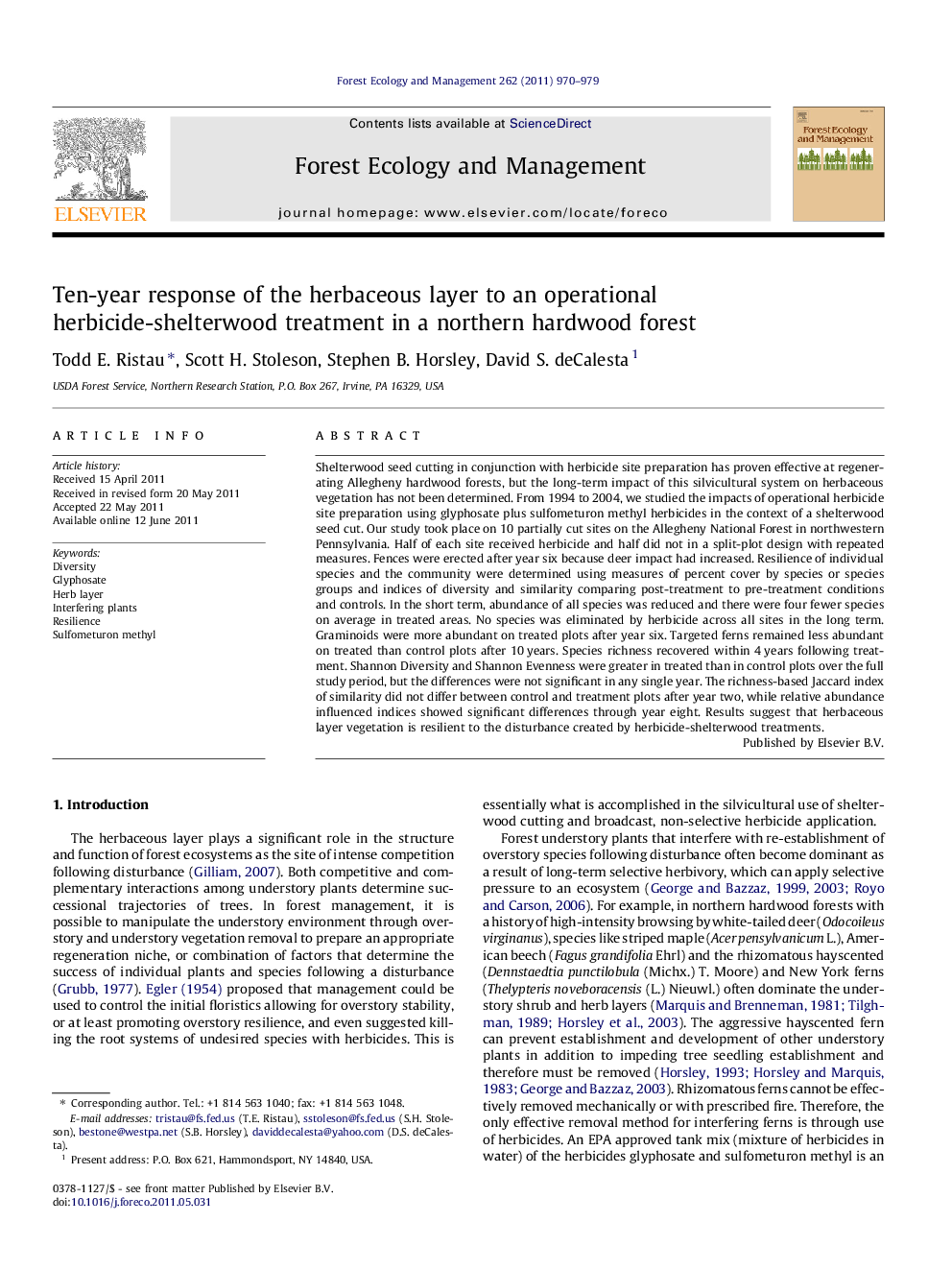| کد مقاله | کد نشریه | سال انتشار | مقاله انگلیسی | نسخه تمام متن |
|---|---|---|---|---|
| 87839 | 159269 | 2011 | 10 صفحه PDF | دانلود رایگان |

Shelterwood seed cutting in conjunction with herbicide site preparation has proven effective at regenerating Allegheny hardwood forests, but the long-term impact of this silvicultural system on herbaceous vegetation has not been determined. From 1994 to 2004, we studied the impacts of operational herbicide site preparation using glyphosate plus sulfometuron methyl herbicides in the context of a shelterwood seed cut. Our study took place on 10 partially cut sites on the Allegheny National Forest in northwestern Pennsylvania. Half of each site received herbicide and half did not in a split-plot design with repeated measures. Fences were erected after year six because deer impact had increased. Resilience of individual species and the community were determined using measures of percent cover by species or species groups and indices of diversity and similarity comparing post-treatment to pre-treatment conditions and controls. In the short term, abundance of all species was reduced and there were four fewer species on average in treated areas. No species was eliminated by herbicide across all sites in the long term. Graminoids were more abundant on treated plots after year six. Targeted ferns remained less abundant on treated than control plots after 10 years. Species richness recovered within 4 years following treatment. Shannon Diversity and Shannon Evenness were greater in treated than in control plots over the full study period, but the differences were not significant in any single year. The richness-based Jaccard index of similarity did not differ between control and treatment plots after year two, while relative abundance influenced indices showed significant differences through year eight. Results suggest that herbaceous layer vegetation is resilient to the disturbance created by herbicide-shelterwood treatments.
► Herbaceous layer plants were resilient to shelterwood-herbicide treatments.
► Short-term abundance of summer herbaceous plants was reduced.
► Shannon diversity and evenness were increased with herbicide use.
► Recovery was from: survival in situ, the seed bank, or by vegetative spread.
Journal: Forest Ecology and Management - Volume 262, Issue 6, 15 September 2011, Pages 970–979